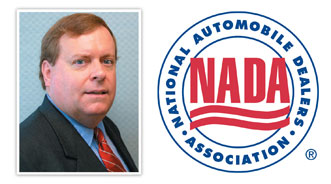NADA: Franchised Used Sales Up Almost 15% & Dealer Profitability Up 40% Year-Over-Year

While 760 stores closed up shop last year, dealers were 40-percent more profitable than they were in 2009 and have begun this year with similar progress, according to the National Automobile Dealers Association’s recent reports regarding the health of franchised dealers.
Last year, dealers faced a difficult economy recovery and brand discontinuation — which led to the aforementioned dealership closures — but they still recorded pre-tax net profitability of 2.1 percent, compared to 1.5 percent the prior year, thanks largely to “strict cost control,” said Paul Taylor, NADA’s chief economist.
Dealers cut back on rent and real-estate costs and advertising expenses, while also keeping their floor plan expenses low, he explained.
This year, dealers are looking at the mountainous challenge of a Japanese earthquake that disrupted production and left already-thirsty stores with a gap in supply. They’re also dealing with high gas prices that have affected demand at their stores.
But as NADA’s data would suggest, dealers have still managed to thrive.
In the first four months of this year, dealers achieved pre-tax net profit of 2.5 percent, which is almost 30 percent stronger than the same period of 2010.
Taylor counts small car and crossover demand as a major reason for this hike and also points to smaller floor plan expenses — caused by lower dealer inventory after the Japanese supply dearth — as being heavily pivotal, as well.
What’s more, many consumers are now able to buy new vehicles because of historically low interest rates, NADA suggested.
“Despite challenges such as higher gasoline prices and generally slow economic growth, dealers have managed to increase sales while keeping their expenses low,” Taylor said. “As production ramps up in July, and lenders increase their loan volume, we can expect to see continued growth in both sales and profits.”
Delving into some year-to-date statistics through April, NADA indicated that new-vehicle sales were up 26.6 percent from the same period of 2010, while used sales were up 14.8 percent. Service and parts sales climbed 10.3 percent.
Offering some more recent data, NADA indicated that dealer inventory as of June 1 was at 49 days, on average. This compares to the typical average of 60 days.
Taylor suggests that June sales will reflect even greater supply hurdles, but he forecasts a strong second half of the year for dealers.
Citing data from WardsAuto.com, NADA indicated that 1.06 million vehicles were sold in May, down 3.9 percent from May 2010.
“The decrease was driven by supply disruptions for the Japanese automakers and softness in demand for full-size pickups due to fuel price increases,” officials suggested.
The seasonally adjusted annualized rate was less than 12 million units for the first time in six months, NADA indicated, as it came in at 11.7 million units.
That said, year-to-date sales through May have reached 5.26 million units, up 13.9 percent year-over-year.

 View The Latest Edition
View The Latest Edition

